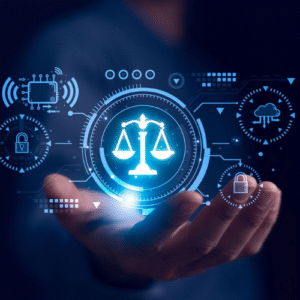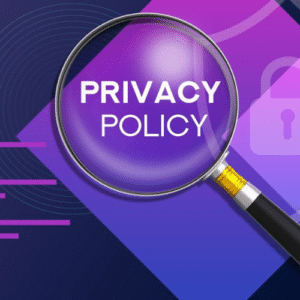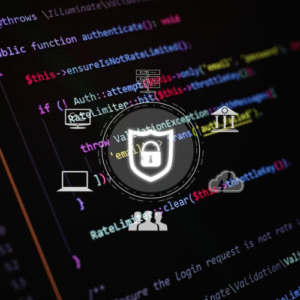
Key Takeaways
- Dark patterns in data collection are manipulative design tactics or hidden AI-discovered correlations that can lead to non-compliant data use.
- GDPR consent compliance requires explicit opt-in consent, while CCPA data compliance requires transparent, simple opt-outs.
- Privacy compliance automation helps ensure discovered patterns are acted on legally and ethically.
- Ethical automation builds customer trust by aligning AI use with clear data privacy best practices.
- Companies can avoid dark patterns by auditing touchpoints, validating insights with consent records, and automating governance.
Companies today are racing to collect more customer data, and AI-powered marketing automation makes it easier than ever to uncover hidden behavioral patterns that humans might miss. And while these insights can drive personalization and growth, they often come at a cost when businesses rely on manipulative UX or act on AI-discovered correlations without clear permissions. But these dark patterns in data collection put organizations at risk of privacy violations, regulatory fines, and customer backlash. Therefore, the real opportunity is not in how much data can be captured, but in how responsibly it is used—with automation ethics ensuring GDPR compliance, CCPA compliance, and lasting customer trust.
What are Dark Patterns in Data Collection?
Dark patterns in data collection are tactics or processes that trick or pressure users into sharing data they might not have freely chosen to provide. Examples include pre-ticked consent boxes, confirmshaming (“No thanks, I don’t care about my privacy”), and hidden or hard-to-find unsubscribe links.
Today, the concept also covers hidden or invisible data correlations discovered by AI, such as customers who only engage with offers on paydays, audiences clicking more frequently at certain times of day, and links between webinar attendance and high-value purchase intent. These patterns aren’t inherently negative—the risk lies in how organizations act on them without a clear compliance framework.
Why Do Dark Patterns Clash with GDPR and CCPA Compliance?
Dark patterns undermine user autonomy and directly conflict with global privacy laws. GDPR consent compliance requires explicit, informed, and freely given consent; pre-checked boxes and bundled permissions violate this principle. CCPA compliance demands transparency and easy opt-outs; burying an unsubscribe link or complicating an opt-out flow obstructs user choice. Even if AI uncovers a valid behavioral correlation, using it without explicit consent can fall outside lawful processing rules. Regulators are increasingly cracking down on such practices, issuing fines for misleading consent mechanisms and reinforcing user awareness of how data is handled.
How Do AI and Automation Tools Uncover These Patterns?
Modern AI tools process massive volumes of engagement data—clicks, opens, site visits, timing, and device type—and can uncover correlations no human team could easily detect. Examples include discovering that webinar attendees prefer shorter nurture sequences, or that early-morning engagement predicts higher likelihood of event sign-ups. The real question isn’t just what AI can find, but how it is used; responsible use requires privacy compliance automation to ensure every pattern is checked against permissions before being acted on.
What are Best Practices for Ethical Automation in Data Use?
- Audit every touchpoint and remove manipulative consent designs (confirmshaming, bundled consent, hidden opt-outs).
- Validate insights with consent; just because a pattern exists doesn’t mean you can act on it.
- Communicate transparently; frame personalization as a benefit, not surveillance (“We thought this might interest you”).
- Automate governance so privacy rules are embedded in workflows and violations can’t happen.
- Apply global standards across GDPR, CCPA, LGPD, PDPA and beyond; customers everywhere expect a privacy-first approach guided by best practices.
How 4Thought Provides the Solution?
Marketers don’t have to choose between powerful AI insights and privacy compliance. 4Thought Marketing makes both possible. 4thoughtCX uncovers the hidden patterns that drive engagement and ROI, while 4Comply ensures each insight is filtered through compliance rules, validated against consent, and documented with audit trails. Together, they enable ethical automation, transparent campaigns, and globally compliant marketing strategies. Don’t let dark patterns in data collection turn into compliance risks—use discovery responsibly and build brand trust that lasts.
Conclusion
AI and automation can reveal powerful, previously hidden data patterns, and these discoveries can transform customer engagement when applied responsibly. But when they are used without transparency or consent, they shift quickly from opportunity to liability, undermining both compliance and brand credibility. Therefore, companies that embrace automation ethics, leverage privacy compliance automation, and follow global best practices for data privacy not only avoid dark patterns in data collection but also build sustainable customer relationships and long-term brand authority.
Frequently Asked Questions (FAQs)
-
What are dark patterns in GDPR and CCPA data collection?
Dark patterns in GDPR and CCPA compliance are manipulative UX or automation practices, such as hidden opt-outs or pre-ticked consent boxes, that trick users into sharing data. They violate explicit consent requirements and increase compliance risks.
-
Why do dark patterns create risks for privacy compliance automation?
Dark patterns undermine the purpose of privacy compliance automation by bypassing transparency and consent. Even if AI uncovers hidden behavioral correlations, acting on them without permission violates GDPR consent compliance and CCPA data compliance.
-
How can AI tools like 4thoughtCX uncover hidden data patterns ethically?
AI tools such as 4thoughtCX analyze large datasets to reveal patterns humans miss. To stay ethical, businesses must align these discoveries with GDPR and CCPA compliance rules and use automation tools like 4Comply to enforce customer consent before applying insights.
-
What are the best practices to avoid dark patterns in data collection?
Businesses should:
1. Audit forms and flows to remove manipulative tactics.
2. Align AI insights with explicit user permissions.
3. Use privacy compliance automation to enforce GDPR consent compliance and CCPA opt-out rules.
4. Communicate data use transparently with customers. -
How does 4Thought Marketing build trust through ethical automation?
4thoughtCX uncovers engagement-driving patterns, while 4Comply ensures insights are applied lawfully. This balance enables marketers to leverage AI for growth without violating privacy laws, creating trust and sustainable customer relationships.











